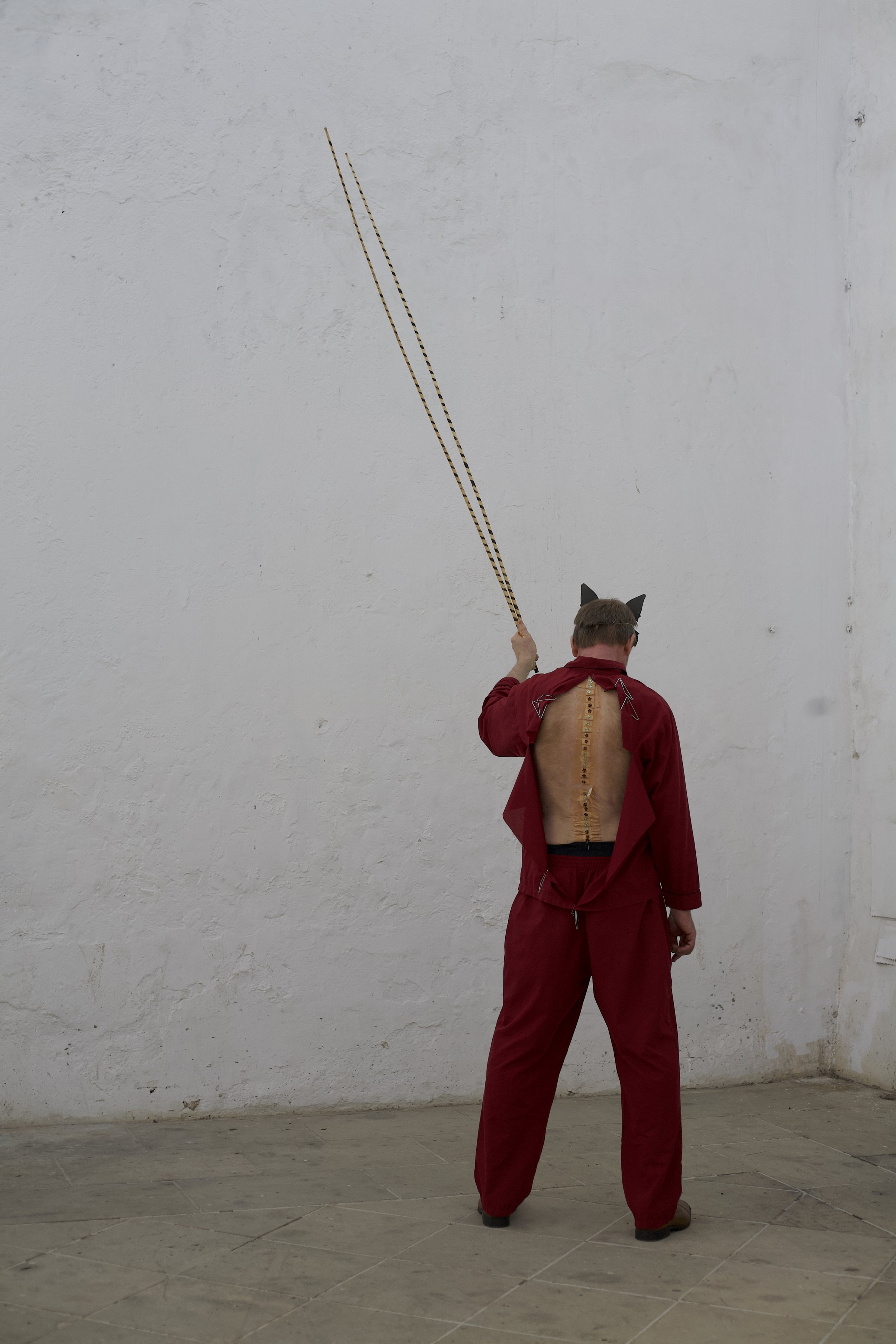A practice-based workshop
PAUL COUILLARD
ONLINE
Week 1: Sept 11, 13 @1:30pm CST | 20:30 CET
Week 2: Sept 18, 20 @1:30pm CST | 20:30 CET
Four ninety - minute sessions
Photo credit Henry Chan
Site - responsive
performance in outdoor settings.
Workshop description:
Any performance can be understood to be site-specific, but not all works aim to be site-responsive. In site-responsive work, aspects of the location become integral to the overall form and content of a performance. Elements such as architecture, geography, climate, traffic patterns, current use, local cultural or social values, or even the various histories attached to a particular site are allowed to shape and contribute to the way the work unfolds. This workshop will examine the notion of site-responsiveness in public, outdoor settings, exploring key questions around what defines a site, what it means to be responsive, and how to go about integrating localized conditions into the play and conversation that is a performance.
Note that participants will be expected to complete practice-based exercises between each online session.
Suggested reading: Paul Couillard, "Site Responsive," Canadian Theatre Review 126 (Spring 2006). ed. Andrew Houston & Laura Nanni. 32-37.
Session 1: Introductions; discussion of the term site-responsive with examples; unpacking notions of "site" and "responsiveness"
HOMEWORK: Perform an action (or excerpt from a performance) that you've done before in a context that was focused on the activity itself (rather than its localized context) in a public, outdoor setting. Make a document of the action (e.g. photo, video/audio recording, written reflection), maximum 2 minutes, for discussion at the next session.
Session 2: Revisiting the notions of site and responsiveness through group reflections on the homework action (some things to consider: What location did you choose, and why? What happened when the action was taken into this new context? Did you have to adapt the action to the location, and if so, how? Did the action change? Did the action reveal anything about the location where it took place? Did anything unexpected happen? Did you find yourself wanting to do anything differently?); discussion around approaching and researching a site.
HOMEWORK: Identify a public, outdoor site where you might want to do a performance. Spend as much time as you can at the location, observing what happens there, how it changes at different times of day, how people move through the space, how it feels to be there, what draws you to the site, etc. Make a detailed list of what you know and what you don't know about the site, what you noticed from spending time there, and anything you think you know about why and how you want to perform there.
Session 3: Revisiting the notions of site and responsiveness in relation to a specific locations through group reflections on the homework exercise; discussion around respecting a site, approaching performance as a conversation with the site, other ways of researching a site, integrating localized elements into a performance, logistics, anticipating and dealing with the unexpected, time in relation to site
HOMEWORK: Design and undertake a site-responsive action at the site you researched in the previous exercise. Make a document of the action (e.g. photo, video/audio recording, written reflection), maximum 2 minutes, for discussion at the next session.
Session 4: Group reflections on the homework assignment. What happened? How did you enfold the site into the unfolding of the action? How did thinking about ideas of site and responsiveness affect your approach to performing? What did you learn from and about the site? What is unique about this site? Are there other aspects of the site you could have approached responsively? What strategies or techniques could you use from this performance when thinking about or approaching another site?

Paul Oaxaca "Duorama 129" (with Ed Johnson) Museo de arte contemporáneo de Oaxaca (MACO), Oaxaca, Mexico, (2020) Photo credit Fausto Luna
![I – You – We [Eu – Você – Nós] presented in the context of "Perfor6 [quem?]" at Largo da Batata, Sao Paulo, Brazil, Photo credit Dominique Wainstein](https://images.squarespace-cdn.com/content/v1/605a589dc259932a14af4741/41aee45c-5f8d-440d-8e24-7baef4ee4a83/Couillard2015+-+Paul+Couillard.jpg)
I – You – We [Eu – Você – Nós] presented in the context of "Perfor6 [quem?]" at Largo da Batata, Sao Paulo, Brazil, Photo credit Dominique Wainstein


